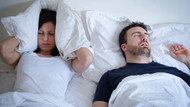Sleep apnoea impacts around 5% of Australians, with around one in four men over the age of 30 affected1.
There’s a lot of misinformation out there about sleep apnoea, how it impacts your health and your sleep so we’ve debunked four widespread myths of sleep apnoea.
Myth #1: Sleep apnoea only affects men
Although men are twice as likely to have sleep apnoea as women, women with sleep apnoea are often under-diagnosed due to the social stigma associated with snoring.
A 2019 study that involved 675 women and 1,238 men has found that women not only snore as much as men but they also snore as loudly2.
The study also explained as women tend to under-report whether they snore or do not know that they snore unless they are told by a partner or a roommate, this may explain why sleep conditions in women tend to be underdiagnosed or undertreated.
Even children can suffer from sleep apnoea, with the most common cause of sleep apnoea being enlarged tonsils or adenoids3.
Ultimately, all age groups from both genders are affected by the condition.
Myth #2: Sleep apnoea is caused by obesity
Being overweight or obese strongly increases the risk of developing sleep apnoea as the fatty tissue at the back of the throat collapses and blocks the airway throughout the night3.
However, even a person who isn’t overweight or obese can develop sleep apnoea if they have a narrow airway or structural abnormalities in the jaw, tonsils, tongue, septum and soft palate.
For example those that are at an increased risk of developing sleep apnoea have3:
-
Large tonsils
-
Large adenoids
-
A naturally narrow throat
-
Naturally narrow nasal passages
Myth #3: Snoring means you have sleep apnoea
Just because you snore doesn’t immediately mean you have sleep apnoea, but it can be a clue. However, not everyone who has sleep apnoea snores.
Snoring is considered a symptom of sleep apnoea when it is followed by silent breathing pauses, choking or gasping sounds.
Snoring can be caused by a range of things, including4:
-
Later stages of pregnancy
-
Alcohol consumption
-
Obesity
-
Swollen tonsils and adenoids
Myth #4: One mask fits all - All CPAP masks are the same
Everyone’s face is unique, and in order to get the most out of your CPAP treatment, it’s important to find a mask that fits and works for you.
The main types of masks are face masks, nasal masks and pillow masks. There’s a misconception that a full face mask is better than a nasal mask, but which mask is right for you depends on how you sleep6.
-
Full face masks are better suited for people who breathe through their mouth and require higher pressure.
-
A nasal mask is preferred for those seeking more natural airflow and for those who move around in their sleep a lot.
-
A nasal pillow mask may suit those who sleep on their side.
What are my next steps?
We hope we’ve been able to help debunk some of the more popular sleep apnoea myths.
If you believe you may be at risk of sleep apnoea, take our free online quiz to determine your risk factors of sleep apnoea.
Already diagnosed with Sleep Apnoea? Shop our wide range of machines.
References
1Better Health Victoria, Sleep Apnoea, accessed 13 March 2023
2Journal of Clinical Sleep Medicine, The Presence of Snoring as Well as its Intensity Is Underreported by Women, accessed 13 March 2023
3Healthdirect, Obstructive sleep apnoea, accessed 13 March 2023
4John Hopkins Medicine, Snoring, accessed 13 March 2023
5Journal of Clinical Sleep Medicine, The Face of Sleepiness: Improvement in Appearance after Treatment of Sleep Apnea, accessed 13 March 2023
6Sleep Foundation, How to Choose a CPAP Mask Based On Your Sleep Position, accessed 13 March 2023

